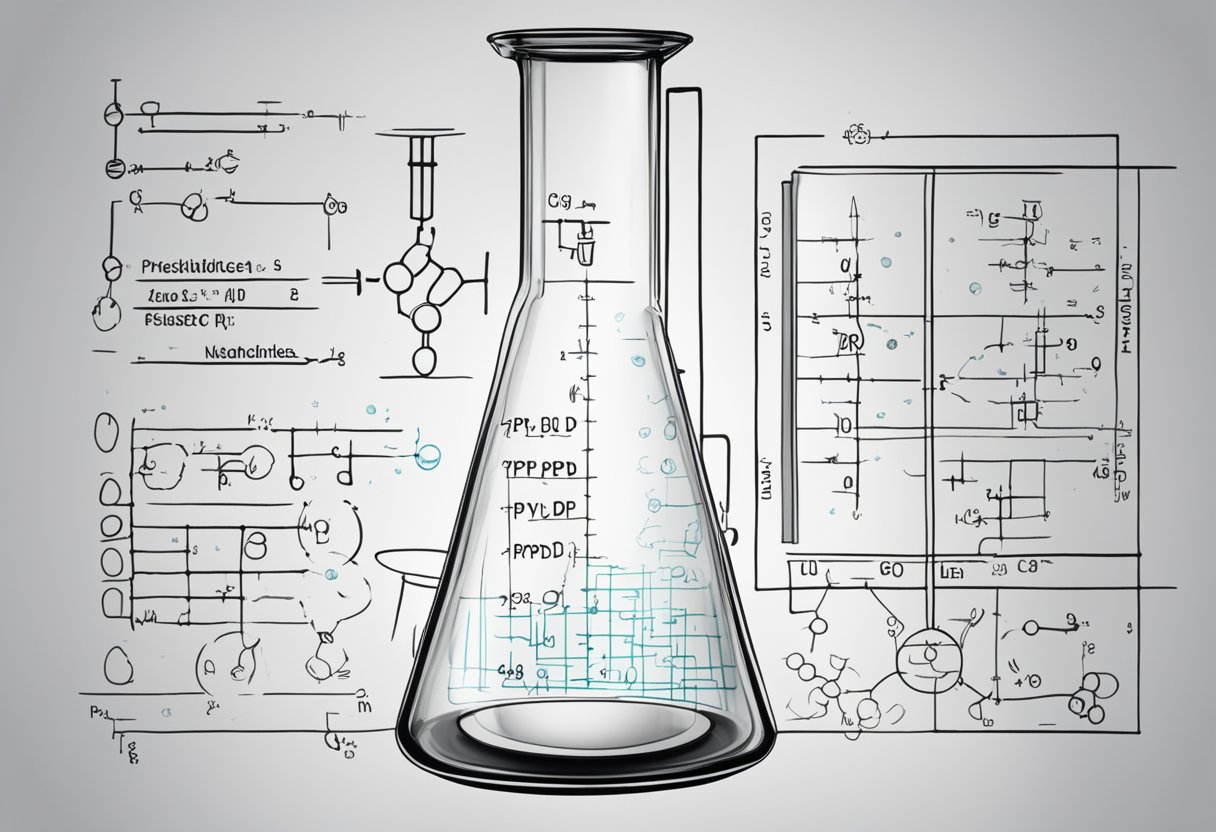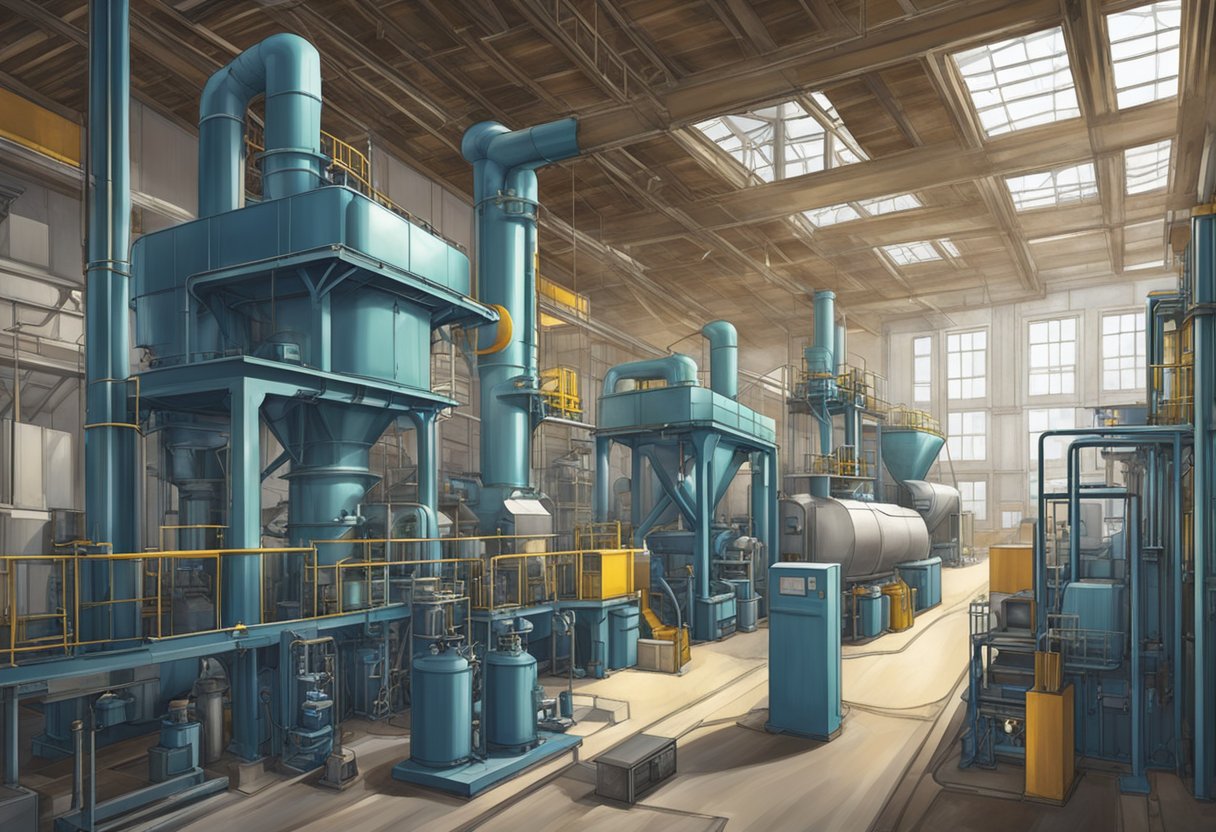6PPD Rubber: Understanding Its Role in Tire Manufacturing
19/01/2024
6PPD rubber is a type of synthetic rubber that has been gaining popularity in recent years due to its excellent resistance to weathering, ozone, and heat. It is commonly used in the manufacturing of tires, hoses, belts, and other automotive rubber products. This type of rubber is made by combining various chemicals, including 6PPD (6-PPD), which is a powerful antioxidant that helps to protect the rubber from degradation caused by exposure to UV light, heat, and other environmental factors.

One of the main advantages of 6PPD rubber is its ability to withstand harsh conditions and maintain its properties over time. This makes it an ideal material for use in the automotive industry, where durability and reliability are essential. Additionally, 6PPD rubber is known for its excellent resistance to cracking, abrasion, and tearing, which helps to extend the lifespan of the products made from it.
Despite its many benefits, there are also some concerns about the safety of 6PPD rubber. Some studies have suggested that exposure to 6PPD and other chemicals used in the manufacturing process could be harmful to human health and the environment. As a result, there is ongoing research into the potential risks associated with this type of rubber, and efforts are being made to develop safer alternatives.
Chemical Properties of 6PPD

6PPD is a chemical compound that is commonly used in the production of rubber. It is known for its ability to protect rubber against degradation caused by exposure to heat, light, and ozone. This section will provide an overview of the chemical properties of 6PPD.
Molecular Formula and Structure
6PPD has a molecular formula of C18H24N2. It is a dark purple solid that is insoluble in water but soluble in organic solvents such as benzene and toluene. The chemical structure of 6PPD is shown below:
Chemical Reactivity
6PPD is a relatively stable compound. It is not reactive towards acids or bases, and it does not undergo significant degradation under normal storage conditions. However, it can react with certain oxidizing agents such as nitric acid and hydrogen peroxide, leading to the formation of potentially harmful byproducts.
Thermal Stability
One of the most important properties of 6PPD is its thermal stability. It has a high melting point of around 147-149°C, which makes it suitable for use in high-temperature applications. Additionally, it is resistant to thermal degradation, which helps to extend the lifespan of Zinc rubber products.
UV Absorption
6PPD has the ability to absorb UV radiation, which makes it useful for protecting rubber against damage caused by exposure to sunlight. It absorbs radiation in the range of 250-400 nm, which corresponds to the UVB and UVA regions.
In summary, 6PPD is a stable and heat-resistant compound that is commonly used in the production of rubber. Its ability to protect rubber against degradation caused by heat, light, and ozone makes it an important additive in the rubber industry.
6PPD in Rubber Manufacturing

Rubber is a versatile material used in various industries, from automotive to construction. However, rubber is susceptible to degradation caused by environmental factors such as heat, oxygen, and ozone. To prevent this degradation, manufacturers add 6PPD to rubber compounds.
Role of 6PPD in Vulcanization
6PPD plays a vital role in the vulcanization process of rubber. During vulcanization, sulfur is added to rubber to form crosslinks between polymer chains, which increases the strength and durability of the rubber. However, sulfur also creates free radicals that can cause degradation of the rubber over time. 6PPD acts as a sulfur scavenger, neutralizing these free radicals and preventing further degradation.
6PPD as an Antioxidant
In addition to its role in vulcanization, 6PPD is also used as an antioxidant in rubber manufacturing. When exposed to heat and oxygen, rubber can undergo oxidative degradation, leading to cracks, brittleness, and other structural damage. 6PPD prevents this degradation by neutralizing free radicals that form during the oxidation process.
6PPD as an Antiozonant
Ozone is another environmental factor that can degrade rubber. Ozone reacts with the double bonds in rubber, causing cracks and other damage. 6PPD acts as an antiozonant, preventing ozone from reacting with the rubber and thereby protecting it from damage.
Overall, 6PPD plays a crucial role in the manufacturing of rubber products, protecting them from degradation caused by environmental factors. By acting as a sulfur scavenger, antioxidant, and antiozonant, 6PPD increases the durability and lifespan of rubber products.
Health and Environmental Impact

Toxicology of 6PPD
6PPD, or N-(1,3-dimethylbutyl)-N’-phenyl-p-phenylenediamine, is a synthetic rubber antioxidant that is commonly used in the tire industry. It is known to have low acute toxicity, but its long-term effects on human health are not well understood. Studies have shown that exposure to 6PPD can cause skin irritation and respiratory problems, and there is some evidence to suggest that it may be a carcinogen.
6PPD and Aquatic Life
6PPD is also known to have a negative impact on aquatic life. When tires wear down, they release 6PPD into the environment, where it can accumulate in waterways and harm fish and other aquatic organisms. Studies have shown that 6PPD can cause developmental abnormalities and reproductive problems in fish, and it can also have a toxic effect on algae and other microorganisms.
Regulations and Safety Measures
Given the potential health and environmental risks associated with 6PPD, there are regulations in place to limit its use and exposure. In the United States, the Environmental Protection Agency (EPA) has established a Maximum Contaminant Level (MCL) of 0.05 mg/L for 6PPD in drinking water. Additionally, the Occupational Safety and Health Administration (OSHA) has set a permissible exposure limit (PEL) of 5 mg/m3 for 6PPD in workplace air.
To minimize exposure to 6PPD, safety measures should be taken when handling and disposing of tires and other rubber products. This includes wearing protective gloves and masks, washing hands thoroughly after handling tires, and ensuring that tires are disposed of properly at designated facilities. By following these guidelines, the risks associated with 6PPD can be minimized, and the health and environmental impact of this compound can be reduced.
Production Process of 6PPD
Raw Materials
The production of 6PPD (N-(1,3-dimethylbutyl)-N’-phenyl-p-phenylenediamine) involves the use of several raw materials. The primary raw material used in the production process is aniline, which is a colorless liquid with a pungent odor. Other raw materials include 1,3-dimethylbutylamine, hydrogen peroxide, and sodium hydroxide. These raw materials are carefully selected based on their purity and quality, as they can significantly affect the final product’s characteristics.
Synthesis of 6PPD
The synthesis of 6PPD involves several steps, including the condensation of aniline and 1,3-dimethylbutylamine to form N-(1,3-dimethylbutyl) aniline. The resulting product is then oxidized using hydrogen peroxide to form N-(1,3-dimethylbutyl)-4-aminophenol. This intermediate product is then further reacted with aniline to form 6PPD.
Purification and Quality Control
After the synthesis of 6PPD, the product is purified to remove any impurities that may have formed during the reaction. The purification process involves several steps, including filtration, washing, and drying. The final product is then subjected to rigorous quality control tests to ensure that it meets the required specifications. These tests include analysis of the product’s physical and chemical properties, such as melting point, boiling point, and purity.
Overall, the production process of 6PPD is a complex chemical process that requires careful selection of raw materials, precise control of reaction conditions, and rigorous quality control measures. The resulting product is a high-quality antioxidant that is widely used in the rubber industry to improve the durability and performance of rubber products.
Application of 6PPD in Different Industries
6PPD is a versatile chemical compound that finds its application in various industries. Its primary use is as an antioxidant in the rubber industry, but it has several other applications as well.
Rubber Industry
6PPD is widely used in the rubber industry as an antioxidant to prevent the degradation of rubber products. It improves the durability and longevity of rubber products such as tires, conveyor belts, and hoses. It also helps to protect rubber from environmental factors such as heat, ozone, and UV radiation.
Automotive Industry
In the automotive industry, 6PPD is used as an additive in engine oils to prevent the oxidation of lubricants. It helps to extend the life of the engine oil and improve the performance of the engine.
Plastics Industry
6PPD is also used in the plastics industry as an antioxidant to prevent the degradation of plastic products. It helps to improve the durability and longevity of plastic products such as pipes, cables, and packaging materials.
Petroleum Industry
In the petroleum industry, 6PPD is used as an additive in fuel to prevent the oxidation of gasoline and diesel. It helps to improve the fuel efficiency and reduce the emissions of harmful gases.
Other Industries
Apart from the above-mentioned industries, 6PPD finds its application in several other industries such as adhesives, coatings, and paints. It is used as an antioxidant to prevent the degradation of these products and improve their durability.
In conclusion, 6PPD is a versatile chemical compound that finds its application in various industries. Its primary use is as an antioxidant in the rubber industry, but it has several other applications as well.
Market Analysis for 6PPD
Global Demand
The global demand for 6PPD rubber is expected to grow steadily in the coming years. The increasing demand for tires, particularly in developing countries, is a major driving force behind the growth. The rising demand for automobiles, coupled with the growing awareness of the importance of tire maintenance, is also expected to contribute to the growth of the 6PPD market.
Key Manufacturers
There are several key manufacturers in the 6PPD market, including Eastman, Lanxess, and Kumho Petrochemical. These companies are investing heavily in research and development to improve the quality and performance of 6PPD rubber. They are also expanding their production capacities to meet the growing demand for the product.
Market Trends
One of the major trends in the 6PPD market is the increasing demand for eco-friendly products. Manufacturers are developing new formulations of 6PPD rubber that are more environmentally friendly. Another trend is the growing use of 6PPD rubber in non-tire applications, such as industrial hoses and conveyor belts. This is expected to further drive the growth of the market.
Overall, the 6PPD market is expected to continue to grow in the coming years, driven by the increasing demand for tires and the growing awareness of the importance of tire maintenance. The key manufacturers in the market are investing heavily in research and development to improve the quality and performance of 6PPD rubber, and to develop new formulations that are more environmentally friendly.
Technological Advancements in 6PPD Synthesis
6PPD (N-(1,3-dimethylbutyl)-N’-phenyl-p-phenylenediamine) is a widely used antioxidant in the rubber industry. It plays a crucial role in preventing the degradation of rubber products caused by exposure to ozone, heat, and other environmental factors. Over the years, there have been several technological advancements in the synthesis of 6PPD that have improved its quality, purity, and efficiency.
One of the most significant advancements in 6PPD synthesis is the use of continuous flow reactors. These reactors offer several advantages over traditional batch reactors, including higher yields, improved product quality, and reduced waste. Continuous flow reactors allow for precise control of reaction conditions, which can lead to better selectivity and fewer impurities in the final product.
Another technological advancement in 6PPD synthesis is the use of novel catalysts. Catalysts play a crucial role in the reaction, and the choice of catalyst can have a significant impact on the quality and efficiency of the process. New catalysts have been developed that offer improved selectivity, higher yields, and reduced reaction times. These catalysts are often more environmentally friendly and cost-effective than traditional catalysts, making them an attractive option for manufacturers.
In addition to these advancements, there have been improvements in the purification and separation of 6PPD. New separation techniques, such as chromatography and membrane filtration, have been developed that offer higher purity and yield than traditional methods. These techniques are also more efficient and cost-effective, making them a popular choice for manufacturers.
Overall, the technological advancements in 6PPD synthesis have led to significant improvements in the quality, purity, and efficiency of the process. These advancements have also made 6PPD more environmentally friendly and cost-effective, which is essential for manufacturers in today’s market. As technology continues to advance, it is likely that we will see further improvements in the synthesis of 6PPD and other rubber additives.
Challenges in 6PPD Production and Use
Environmental Concerns
The production and use of 6PPD have raised environmental concerns due to the release of harmful substances during the manufacturing process. The primary concern is the release of 4-ADPA, a carcinogenic compound that can cause serious health problems. This issue has led to increased regulation and scrutiny of 6PPD production facilities.
Furthermore, the disposal of 6PPD-containing rubber products after their useful life is another environmental concern. The decomposition of rubber products releases 6PPD and other harmful substances into the environment, leading to pollution and environmental degradation.
Substitute Products
The demand for substitute products has increased due to the environmental concerns associated with 6PPD. The production of bio-based antioxidants is a promising alternative to 6PPD. These antioxidants are derived from renewable sources and have lower environmental impact than 6PPD. However, the production of bio-based antioxidants is still in its early stages and requires further research and development.
Supply Chain Issues
The supply chain for 6PPD is complex, involving multiple intermediaries and stakeholders. The production of 6PPD requires a range of raw materials, including aniline, nitrobenzene, and cyclohexene. The availability and cost of these raw materials can vary significantly, leading to supply chain disruptions and price volatility.
Moreover, the transportation and storage of 6PPD require specialized equipment and handling procedures due to the compound’s hazardous properties. This adds additional complexity to the supply chain and can result in increased costs and delays.
In conclusion, the production and use of 6PPD face challenges related to environmental concerns, substitute products, and supply chain issues. These challenges require the industry to adopt sustainable practices and develop innovative solutions to ensure the continued availability and safe use of 6PPD.
Future of 6PPD in Rubber Industry
6PPD is a crucial ingredient in the rubber industry, and its future looks promising. The demand for rubber products is increasing rapidly, and the use of 6PPD is expected to grow along with it.
One of the main reasons for this growth is the increasing demand for tires, which are the largest consumer of rubber. With the growth of the automotive industry, the demand for tires is expected to increase, which will drive the demand for 6PPD.
Another factor that will contribute to the growth of 6PPD is the increasing focus on sustainability. 6PPD is an important antioxidant that helps extend the life of rubber products, which reduces waste and helps conserve resources. As more companies focus on sustainability, the demand for 6PPD is expected to grow.
In addition, the development of new technologies and formulations is expected to drive the growth of 6PPD. Researchers are constantly exploring new ways to improve the performance of rubber products, and 6PPD is an important component in many of these formulations.
Overall, the future of 6PPD in the rubber industry looks bright. With the increasing demand for rubber products, the focus on sustainability, and the development of new technologies, the demand for 6PPD is expected to continue to grow.
Case Studies on 6PPD Applications
6PPD is a widely used antioxidant in the rubber industry. Its effectiveness in preventing ozone cracking and improving the durability of rubber products has been well documented. Here are some case studies that demonstrate the practical applications of 6PPD:
Case Study 1: Tire Manufacturing
A major tire manufacturer in the United States was experiencing premature cracking in their tires, resulting in costly recalls and repairs. After conducting extensive research, they discovered that the problem was caused by ozone degradation. They decided to incorporate 6PPD into their tire manufacturing process to prevent further cracking.
The addition of 6PPD proved to be highly effective, as the tires produced with the antioxidant showed no signs of cracking even after months of testing. The manufacturer was able to reduce their recall and repair costs significantly, and the reputation of their brand was restored.
Case Study 2: Industrial Belts
An industrial belt manufacturer in Asia was facing a similar issue with their products. The belts were cracking prematurely due to exposure to ozone, leading to frequent replacements and downtime. The manufacturer decided to add 6PPD to their rubber compound to improve the durability of their belts.
The results were impressive, as the belts produced with 6PPD lasted significantly longer than those produced without it. The manufacturer was able to reduce their production costs and increase their profits, while their customers benefited from longer-lasting, more reliable belts.
Case Study 3: Automotive Seals
An automotive seal manufacturer in Europe was struggling to meet the quality standards of their customers. The seals were failing prematurely due to environmental factors, resulting in costly warranty claims and damage to their reputation. The manufacturer decided to incorporate 6PPD into their rubber compound to improve the resistance of their seals to ozone and other environmental factors.
The addition of 6PPD proved to be highly effective, as the seals produced with the antioxidant showed no signs of degradation even after months of testing. The manufacturer was able to improve the quality of their products and reduce their warranty claims, while their customers benefited from more reliable seals.
Overall, these case studies demonstrate the practical applications of 6PPD in the rubber industry. The antioxidant has proven to be highly effective in preventing ozone cracking and improving the durability of rubber products, leading to cost savings and improved customer satisfaction.
Frequently Asked Questions About 6PPD
6PPD is a critical component used in the rubber industry to protect tires from damage caused by ozone and UV light. Here are some frequently asked questions about 6PPD:
What is 6PPD?
6PPD, also known as N-(1,3-dimethylbutyl)-N’-phenyl-p-phenylenediamine, is a synthetic rubber antioxidant that is widely used in the tire industry to protect tires from ozone cracking and other forms of weathering.
How does 6PPD work?
When added to rubber compounds, 6PPD reacts with and neutralizes free radicals that are formed during the process of oxidation. This prevents the rubber from breaking down and becoming brittle over time, which can lead to cracks and other forms of damage.
Is 6PPD safe?
Yes, 6PPD is considered safe for use in rubber products. It has been extensively tested and evaluated by regulatory agencies around the world, including the US Environmental Protection Agency (EPA) and the European Chemicals Agency (ECHA).
Are there any alternatives to 6PPD?
Yes, there are several other types of rubber antioxidants that can be used in place of 6PPD, including IPPD (N-isopropyl-N’-phenyl-p-phenylenediamine) and TMQ (polymerized 2,2,4-trimethyl-1,2-dihydroquinoline). However, 6PPD is still the most widely used antioxidant in the tire industry due to its effectiveness and low cost.
How is 6PPD regulated?
6PPD is classified as a hazardous substance by regulatory agencies in many countries, including the US and Europe. As a result, manufacturers and users of 6PPD are required to follow strict safety guidelines to minimize the risk of exposure and environmental contamination.
Can 6PPD be recycled?
Yes, 6PPD can be recycled along with other rubber materials. However, it is important to ensure that the recycling process does not result in the formation of harmful byproducts or the release of toxic gases.




